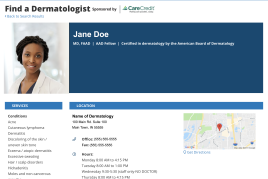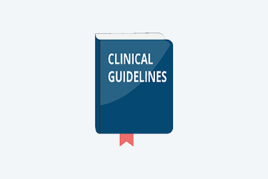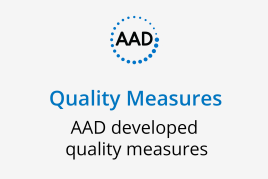Indoor tanning
Indoor tanning use
35% of American adults, 59% of college students and 17% of teens have reported using a tanning bed in their lifetime.1
Though the numbers have been decreasing in recent years, approximately 7.8 million adults in the US still engage in indoor tanning.2
Research indicates that more than half of indoor tanners (52.5%) start tanning before age 21, while nearly one-third (32.7%) start tanning before age 18.3
44.5% of those who started tanning before age 16 reported that they did so with a family member.3
49.2% of those who started tanning with a family member did so with their mother.3
Among high school students in the U.S., tanning has declined in recent years, but has not stopped entirely.4
In 2019, 8.4% of white female high school students have tanned indoors.5
Since 2007, adult indoor tanning prevalence has significantly decreased in states that have enacted youth access legislation but has not significantly decreased over time in states with no age restrictions on indoor tanning use.7
Though indoor tanning in U.S. adults has declined in recent years, according to 2018 data, about a quarter of those who report any indoor tanning, tanned 25 times or more in one year.7
Risks of indoor tanning
The United States Department of Health and Human Services and the World Health Organization's International Agency of Research on Cancer panel have declared ultraviolet radiation from the sun and artificial sources, such as tanning beds and sun lamps, to be a known carcinogen (cancer-causing substance).8,9
Research indicates that UV light from the sun and tanning beds can both cause melanoma and increase the risk of a benign mole progressing to melanoma.10
Indoor tanning equipment, which includes all artificial light sources, including beds, lamps, bulbs, booths, etc., emits harmful UVA and UVB radiation. The amount of the radiation produced during indoor tanning is similar to that of the sun, and in some cases might be stronger.11-12
Evidence from multiple studies has shown that exposure to UV radiation from indoor tanning devices is associated with an increased risk of melanoma and non-melanoma skin cancer, including squamous cell carcinoma and basal cell carcinoma.13-19
Researchers estimate that indoor tanning may cause upwards of 400,000 cases of skin cancer in the U.S. each year.1
Higher melanoma rates among young females compared to young males may be due in part to widespread use of indoor tanning among females.20
Using indoor tanning beds can increase your risk of skin cancer, including melanoma, the deadliest form of skin cancer.13,19
Using tanning beds before age 35 can increase your chances of developing melanoma by 59%; the risk increases with each use.19,21
Women younger than 30 are 6 times more likely to develop melanoma if they tan indoors.22
Research demonstrates that even people who do not burn after indoor tanning or sun exposure are at an increased risk of melanoma if they tan indoors.23
Indoor tanning can increase users’ risk of developing squamous cell carcinoma by 67% and basal cell carcinoma by 29%.16
The estimated cost of treating the skin cancers attributable to indoor tanning is $343.1 million a year, leading to a total economic loss of $127.3 billion over the lifetime of those affected.24
Studies have demonstrated that exposure to UV radiation during indoor tanning damages the DNA in the skin cells. Excessive exposure to UV radiation during indoor tanning can lead to premature skin aging, immune suppression, and eye damage, including cataracts and ocular melanoma.18, 25-29
A recent investigation estimated that 3,234 injuries related to indoor tanning — including burns, loss of consciousness and eye injuries — were treated in U.S. hospital emergency departments every year from 2003 to 2012.30
In addition to the above-mentioned risks, frequent, intentional exposure to UV light may lead to tanning addiction.18,31-32
Research indicates that more than one-fifth of white women age 18-30 years old who tan indoors exhibit indoor tanning dependence.32
Indoor tanning beds/lamps should be avoided and should not be used to obtain vitamin D because UV radiation from indoor tanning is a risk factor for skin cancer. Vitamin D can be obtained by eating a healthy diet and by taking oral supplements.
Legislation and regulations
U.S. Food and Drug Administration regulations on indoor tanning include:
A strong recommendation against the use of tanning beds by minors under 18.
Classification of tanning beds and sunlamps from Class I to Class II medical devices, which means they are considered “moderate to high risk.” The FDA mandates additional oversight of Class II devices, requiring manufacturers to provide more safety assurances.
Labeling that:
Clearly informs users about the risks of using tanning beds.
Warns frequent users of sunlamps to be regularly screened for skin cancer.
Alerts users that tanning lamps are not recommended for people under 18 years old.
The American Academy of Dermatology Association supports state and national efforts that place restrictions on indoor tanning for minors, including restrictions on indoor tanning for minors 18 and under.
California, Delaware, District of Columbia, Hawaii, Illinois, Kansas, Louisiana, Maine, Maryland, Massachusetts, Minnesota, Nevada, New Hampshire, New York, North Carolina, Oklahoma, Oregon, Rhode Island, Texas, Vermont, Virginia, Washington, and West Virginia have passed laws that prohibit minors under the age of 18 from indoor tanning.
Oregon and Washington have passed laws prohibiting minors under the age of 18 from using indoor tanning devices, unless a prescription is provided.
Connecticut, New Jersey, and Pennsylvania have passed legislation banning minors under the age of 17 from using tanning devices.
Minors under the age of 16 are prohibited from using tanning devices in Indiana and Wisconsin, while minors under the age of 15 are prohibited from using tanning devices in Alabama, and those under 14 are prohibited from using tanning devices in Georgia, Idaho, and North Dakota.
Academy position statement about indoor tanning
The AADA opposes indoor tanning and supports a ban on the production and sale of indoor tanning equipment for nonmedical purposes.
The AADA supports the WHO recommendation that minors should not use indoor tanning equipment because indoor tanning devices emit UVA and UVB radiation, and because overexposure to UV radiation can lead to the development of skin cancer.
Unless and until the FDA bans the sale and use of indoor tanning equipment for nonmedical purposes, the Academy supports restrictions for indoor tanning facilities, including:
No person or facility should advertise the use of any UVA or UVB tanning device using wording such as “safe,” “safe tanning,” “no harmful rays,” “no adverse effect,” or similar wording or concepts.
1Wehner MR, Chren M, Nameth D, et al. International Prevalence of Indoor Tanning: A Systematic Review and Meta-analysis. JAMA Dermatol. 2014;150 (4): 390-400. doi:10.1001/jamadermatol.2013.6896.
2Guy GP Jr, Watson M, Seidenberg AB, Hartman AM, Holman DM, Perna F. Trends in indoor tanning and its association with sunburn among U.S. adults. J Am Acad Dermatol. 2017;76(6):1191-1193. doi:10.1016/j.jaad.2017.01.022
3Watson M, Shoemaker M, Baker K. Indoor Tanning Initiation Among Tanners in the United States. JAMA Dermatol. Published online March 22, 2017. doi:10.1001/jamadermatol.2016.5898
4Holman DM, Jones SE, Qin J, Richardson LC. Prevalence of Indoor Tanning Among U.S. High School Students from 2009 to 2017. J Community Health. 2019;44(6):1086-1089. doi:10.1007/s10900-019-00685-y
5Centers for Disease Control and Prevention (CDC). 1991-2019 High School Youth Risk Behavior Survey Data. Available at http://yrbs-explorer.services.cdc.gov/. Accessed February 12, 2021.
6Surveillance, Epidemiology, and End Results (SEER) program 18 registries. Data run July 25, 2018.
7National Cancer Institute. HINTS Brief Number 44: Indoor Tanning Trends Among U.S. Adults (cancer.gov)
8IARC Monographs on the Evaluation of Carcinogenic Risks to Humans, No. 100D. IARC Working Group on the Evaluation of Carcinogenic Risks to Humans. Lyon (FR): International Agency for Research on Cancer; 2012.
9U.S. Department of Health and Human Services, Public Health Service, National Toxicology Program. Report on carcinogens, 14th ed: Ultraviolet-radiation-related exposures. 2016. http://ntp.niehs.nih.gov/go/roc14/
10Shain, AH et al. The genetic evolution of melanoma from precursor lesions. N Engl J Med 2015; 373:1926-1936.
11Hornung RL, Magee KH, Lee WJ, Hansen LA, Hsieh YC. Tanning facility use: are we exceeding the Food and Drug Administration limits? J AM Acad Dermatol. 2003 Oct;49(4):655-61.
12Reza Ghiasvand, Corina S. Rueegg, Elisabete Weiderpass, Adele C. Green, Eiliv Lund, Marit B. Veierød, Ghiasvand et al. Respond to “Indoor Tanning—A Melanoma Accelerator?”, American Journal of Epidemiology, Volume 185, Issue 3, 1 February 2017, Pages 160–161.
13The International Agency for Research on Cancer Working Group on artificial ultraviolet (UV) light and skin cancer "The association of use of sunbeds with cutaneous malignant melanoma and other skin cancers: A systematic review.” International Journal of Cancer. 2007 March 1;120:111-1122.
14Karagas M, et al. "Use of tanning devices and risk of basal cell and squamous cell skin cancers.” Journal of the National Cancer Institute. 2002 February 6;94(3):224-6.
15Colantonio S, Bracken MB, Beecker J. The association of indoor tanning and melanoma in adults: systematic review and meta-analysis. J Am Acad Dermatol 2014;70:847–57.
16Wehner MR, Shive ML, Chren MM, Han J, Qureshi AA, Linos E. Indoor tanning and non-melanoma skin cancer: systematic review and meta-analysis. BMJ. 2012 Oct 2;345:e5909.
17Whitmore SE, Morison, WL, Potten CS, Chadwick C. Tanning salon exposure and molecular alterations. J Am Acad Dermatol 2001;44:775-80.
18Lim HW, James WD, Rigel DS, Maloney ME, Spencer JM, Bhushan R. Adverse effects of ultraviolet radiation from the use of indoor tanning equipment: time to ban the tan. J Am Acad Dermatol. 2011 May;64(5):893-902.
19Boniol M, Autier P, Boyle P, Gandini S. Corrections: Cutaneous melanoma attributable to sunbed use: systematic review and meta-analysis. BMJ 2012;345:e8503.
20Guy GP Jr, Thomas CC, Thompson T, Watson M, Massetti GM, Richardson LC. Vital signs: melanoma incidence and mortality trends and projections - United States,1982-2030. MMWR Morb Mortal Wkly Rep. 2015 Jun 5;64(21):591-6.
21Lazovich, D, et al. Indoor Tanning and Risk of Melanoma: A Case-Control Study in a Highly Exposed Population. Cancer Epidemiol Biomarkers Prev. 2010 June;19(6):1557-1568.
22Lazovich D, et al. Association Between Indoor Tanning and Melanoma in Younger Men and Women. JAMA Dermatol. 2016;152(3):268-275. doi:10.1001/jamadermatol.2015.2938.
23Vogel RI, Ahmed RL, Nelson HH, Berwick M, Weinstock MA, Lazovich D. Exposure to indoor tanning without burning and melanoma risk by sunburn history. J Natl Cancer Inst. 2014 Jul 16;106(7). pii: dju219. doi: 10.1093/jnci/dju219.
24Waters HR and Adamson A. The health and economic implications of using tanning devices. J Cancer Policy. 2016. http://dx.doi.org/10.1016/j.jcpo.2016.003
25World Health Organization. Artificial tanning devices: public health interventions to manage sunbeds. World Health Organization, 2017.
26Piepkorn M. Melanoma genetics: an update with focus on the CDKN2A(p16)/ARF tumor suppressors. J Am Acad Dermatol. 2000 May;42(5 Pt 1):705-22; quiz 723-6.
27Vajdic CM, Kricker A, Giblin M, McKenzie J, Aitken JF, Giles GG, Armstrong BK. Artificial ultraviolet radiation and ocular melanoma in Australia. Int J Cancer. 2004 Dec 10;112(5):896-900.
28Walters BL, Kelly TM. Commercial tanning facilities:a new source of eye injury. Am J Emerg Med 1987;120:767-77.
29Clingen PH, Berneburg M, Petit-Frere C, Woollons A, Lowe JE, Arlett CF, Green MH. Contrasting effects of an ultraviolet B and an ultraviolet A tanning lamp on interleukin-6, tumour necrosis factor-alpha and intercellular adhesion molecule-1 expression. Br J Dermatol. 2001 Jul;145(1):54-62.
30Guy G, Watson M, Haileyesus T, Annest J. Indoor tanning-related injuries in a national sample of U.S. hospital emergency departments. JAMA Intern Med. Published online December 15, 2014.
31Nguyen NT, Fisher DE. MITF and UV responses in skin: From pigmentation to addiction [published correction appears in Pigment Cell Melanoma Res. 2020 Mar;33(2):383]. Pigment Cell Melanoma Res. 2019;32(2):224-236. doi:10.1111/pcmr.12726
32Mays D, Atkins MB, Ahn J and Tercyak KP. Indoor tanning dependence in young adult women. Cancer, Epidemiology, Biomarkers and Prevention. Published online Oct. 19, 2017.
 Make it easy for patients to find you.
Make it easy for patients to find you.
 Meet the new AAD
Meet the new AAD
 2022 AAD VMX
2022 AAD VMX
 AAD Learning Center
AAD Learning Center
 Need coding help?
Need coding help?
 Reduce burdens
Reduce burdens
 Clinical guidelines
Clinical guidelines
 Why use AAD measures?
Why use AAD measures?
 Latest news
Latest news
 New insights
New insights
 Combat burnout
Combat burnout
 Joining or selling a practice?
Joining or selling a practice?
 Advocacy priorities
Advocacy priorities
 Promote the specialty
Promote the specialty
